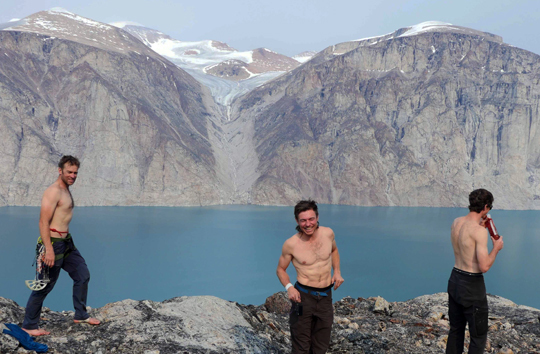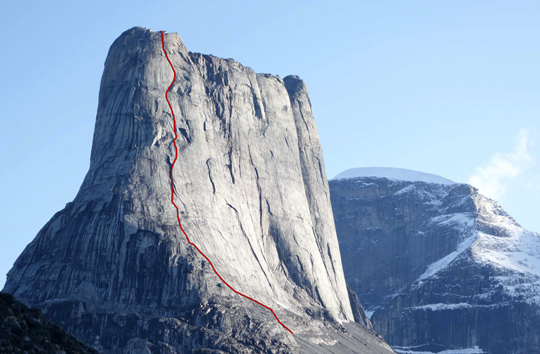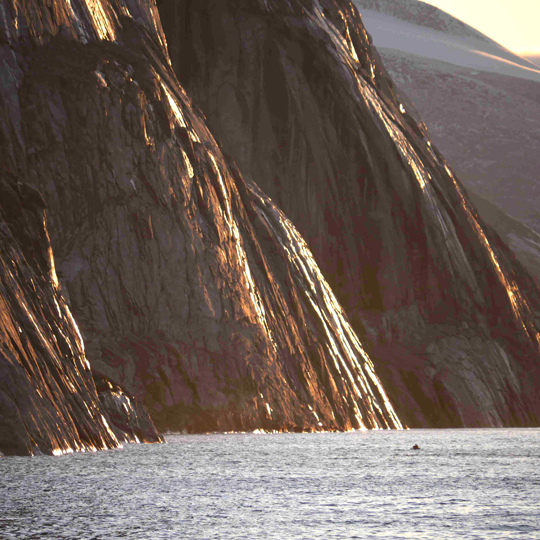
As four Canadians motored across the surface of Sam Ford Fjord during a bumpy 12-hour boat ride from the village of Clyde River this summer, “wall after giant wall shot out of the sea like a hundred Yosemites sardined into one place,” Paul McSorley remembers. Finally landing in the Walker Arm of Baffin Island, Crosby Johnston, Joshua Lavigne, McSorley and Tony Richardson eyed their objective: the 1300-meter north face of the pyramidal Beluga Spire, thought to be the tallest unclimbed wall in the area. They were a crew “willing to accept complete failure in the face of certain uncertainty…excited for the cocktail of coastal, alpine and arctic conditions,” Lavigne said.
The last reported attempt on Beluga’s north face was carried out in 2009 by solo climber Dave Turner. He began up “leaving portaledge, bolts, static rope, and partner (obviously),” he wrote in the 2010 American Alpine Journal. Alas, recently frostbitten toes turned Turner back twice from halfway up the wall. Having traveled to Baffin Island’s remote shores, known for their surplus of virgin granite, intent on opening a route on Beluga, he consoled himself by instead establishing a new 5.10 A3 route on the nearby 1400-meter Broad Peak.
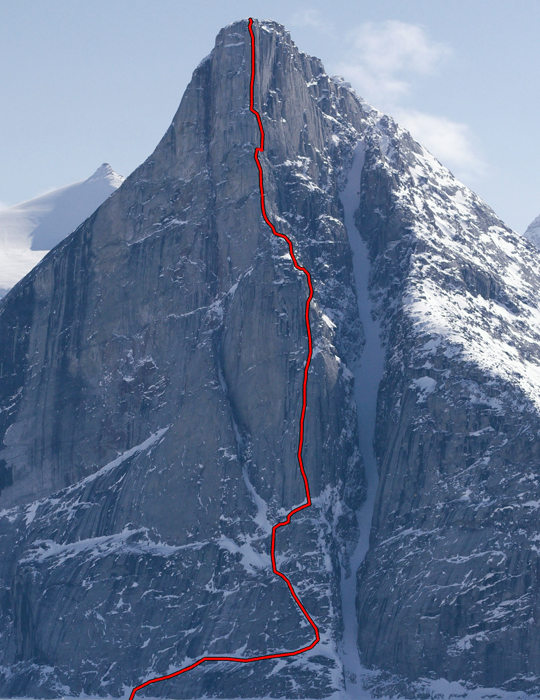
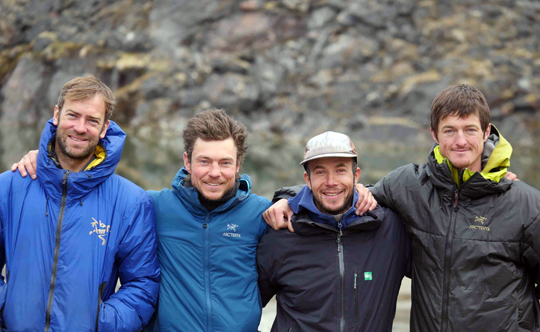
Beluga Spire, between Polar Sun Spire and the Walker Citadel, garnered no attempts for the five years following Turner’s failure. Then the Canadians arrived, sputtering to the base of the wall in what Lavigne called “a leaky tin can of a boat with a two horsepower Yamaha (not exactly the boat of choice for four dudes and their gear in an arctic fjord).” Not wanting to waste any time or good weather, they set up camp amidst “local seal carcasses and polar bear shit” and quickly scurried up the approach slopes to Beluga’s base. After a half-decade hiatus, the north face was once again filled with whoops of triumph and frustration as the climbers began working their way up its looming mass.
Spending two days on route, the team encountered rock that was “continuously engaging [with] good ledges for bivys,” McSorley wrote. The lower pitches were loose but faded quickly from the climbers’ minds. Their route was 29 pitches in total, and they christened the line Harpoon in tribute to the whale hunt occurring in the Clyde River village at the time.
Harpoon, completed on August 2, went at VI, 5.12 with two short sections of A1 that were later freed by a follower. McSorley explained that the grade was only for the books, and he wrote, “the experience can’t adequately be summed up with a grade.”
After celebrating on the summit, the foursome traversed a knife-edge ridge and two more summits before descending 1400 meters of “epic scree” below Polar Sun Spire. They arrived in their camp to continuing good weather, conditions that prompted them to rally their efforts for appropriately named Turret, a monolith rising from the Walker Arm skyline.
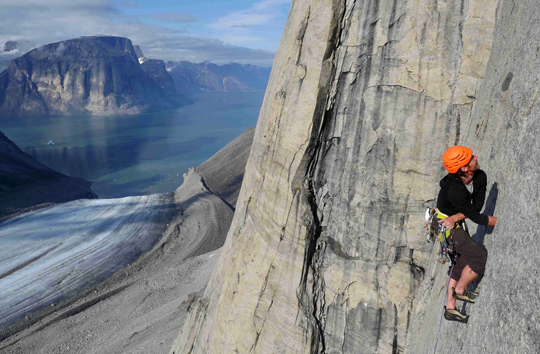
McSorley and Richardson attempted to open a route up the unclimbed west face of the Turret, but were turned around 400 meters up the wall by damning conditions. Still eager, and with good weather dwindling, Johnston and Lavigne snatched an ascent of the Turret’s north pillar, climbing 700 meters of 5.12 A1. They spent 11 hours on route, “encountering unfavorable free-climbing conditions with verglassed cracks and sub zero conditions but still managed to free most of the route,” Lavigne wrote.

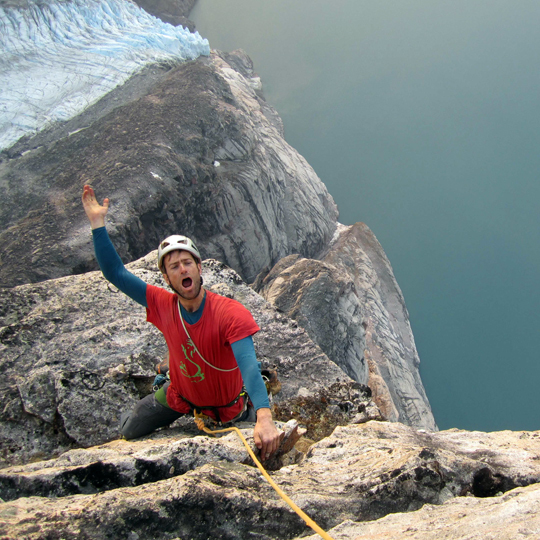
The trip was a “dream come true,” for the four team members, McSorley said. “We feel like this is one of the great climbing arenas of the world and were humbled by the scale of the place,” he wrote on gripped.com. Though the Sam Ford Fjord seems to have–in the wide eyes of an eager climber–more rock than “a hundred Yosemites,” its reputation for expensive travel fees, freezing temperatures, wild sea-based approaches and on-wall grand epics will always keep Yosemite-sized crowds away. It will remain a big-wall playground for an intrepid few.
